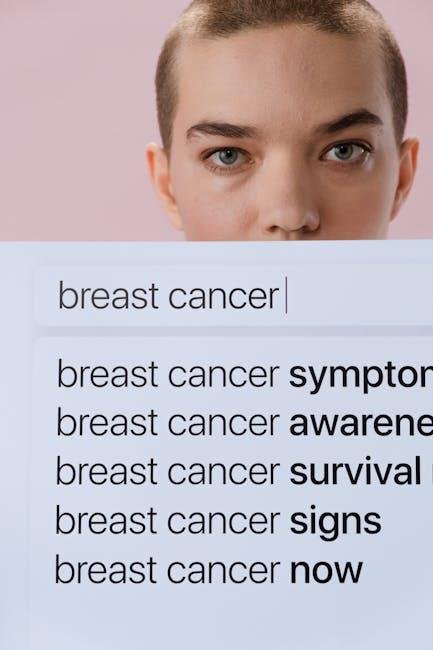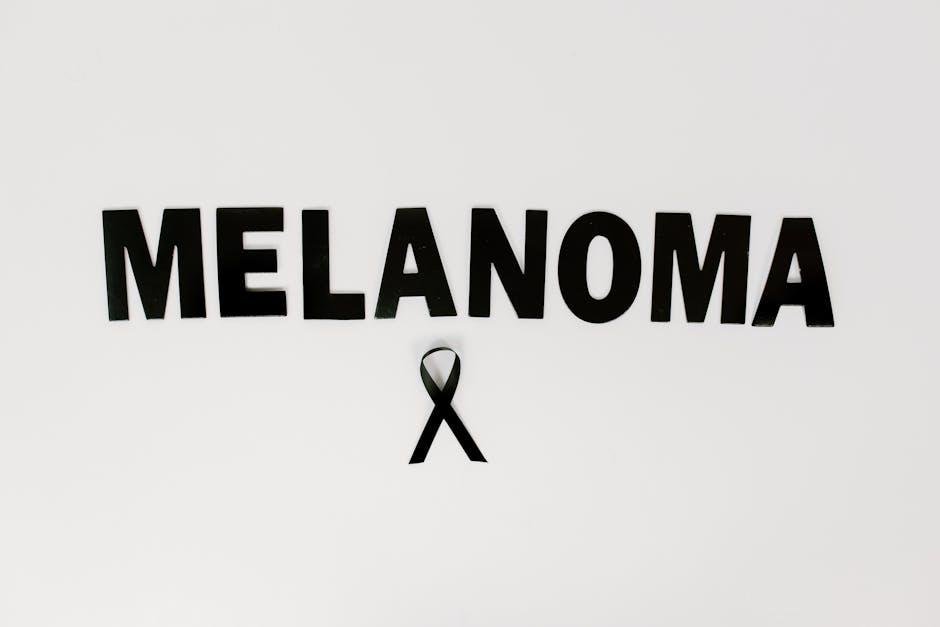In the intricate tapestry of health, subtle signals often weave the first threads of illness long before discomfort takes center stage. Recognizing these early warning signs can be akin to deciphering a hidden language—one that whispers crucial clues about the onset of common diseases. This article embarks on a journey through the quiet hints our bodies offer, shedding light on the initial manifestations that, when noticed in time, can steer us towards timely intervention and better outcomes. Understanding these early alerts not only empowers individuals but also reinforces the delicate balance between awareness and action in the realm of wellness.
Table of Contents
- Recognizing Subtle Symptoms Before They Escalate
- Understanding the Role of Family History and Genetics
- When Routine Checks Reveal Hidden Health Risks
- Lifestyle Factors That Amplify Early Disease Indicators
- Practical Steps to Monitor and Document Your Health Changes
- Seeking Professional Advice: When and How to Act
- Q&A
- Insights and Conclusions

Recognizing Subtle Symptoms Before They Escalate
Many early symptoms of illnesses are so subtle that they easily go unnoticed, yet paying attention to these clues can make a significant difference in your health trajectory. For instance, a slight but persistent change in sleep patterns or an occasional unexplained fatigue might be your body’s discreet way of signaling underlying issues. Being attuned to these minor shifts helps intercept problems before they develop into full-blown conditions. Keep an eye out for signals such as:
- Unusual skin changes, such as patches of dryness or mild discoloration
- Frequent headaches or mild dizziness that aren’t linked to obvious causes
- Subtle digestive disturbances, including slight bloating or irregular bowel habits
- Altered mood or concentration without external stressors
To illustrate, here’s a quick guide to how some subtle symptoms align with common ailments and what to watch for:
| Symptom | Possible Condition | Recommended Action |
|---|---|---|
| Intermittent chest discomfort | Early heart disease | Consult cardiologist for evaluation |
| Persistent mild cough | Chronic respiratory issue | Schedule a pulmonary check-up |
| Repeated unexplained bruising | Blood clotting disorder | Visit hematologist for tests |
Understanding the Role of Family History and Genetics
Family history and genetics serve as invisible threads that weave through our health tapestry, influencing susceptibility to various conditions. Understanding these inherited factors is crucial because they often predispose individuals to diseases long before symptoms appear. For example, a family history rich with instances of heart disease or diabetes can signal an increased risk, prompting proactive monitoring and early intervention. This genetic predisposition doesn’t guarantee illness but acts as a significant warning light, emphasizing the importance of regular check-ups and lifestyle adjustments tailored to your unique genetic blueprint.
To navigate these inherited risks effectively, consider keeping track of your family’s health patterns and sharing this information with your healthcare provider. Key points to monitor include:
- Chronic illnesses such as hypertension, cancer, or autoimmune disorders
- Age of onset where family members developed certain conditions
- Multiple relatives affected by the same disease
- Ethnic background that may predispose to specific conditions
| Condition | Common Genetic Link | Early Warning Signs |
|---|---|---|
| Breast Cancer | BRCA1/BRCA2 mutations | Lumps, skin changes |
| Type 2 Diabetes | Family history | Increased thirst, fatigue |
| Alzheimer’s Disease | APOE-e4 gene | Memory loss, confusion |
When Routine Checks Reveal Hidden Health Risks
Routine health examinations often serve as more than just a checklist; they act as a crucial gateway to unearthing silent conditions that might otherwise go unnoticed. During these regular visits, subtle changes detected through blood work, blood pressure readings, or even a routine eye exam can unveil hidden risks such as early signs of diabetes, hypertension, or cholesterol imbalances. Catching these warning signals early provides an opportunity for timely intervention, potentially staving off more severe complications down the line.
Common hidden health risks identified through routine checks include:
- Elevated blood sugar levels indicating prediabetes or diabetes.
- High blood pressure signaling hypertension before symptoms appear.
- Changes in kidney function tests suggesting early renal issues.
- Abnormal cholesterol profiles predicting cardiovascular concerns.
Below is a simplified overview illustrating the potential unexpected findings during routine tests, underscoring their importance:
| Test | Common Hidden Risks | Indicative Sign |
|---|---|---|
| Blood Glucose | Prediabetes, Diabetes | Slightly elevated fasting sugar |
| Blood Pressure | Hypertension | Consistently high readings above 130/80 |
| Lipid Panel | High Cholesterol, Heart Disease | Elevated LDL, low HDL |
| Kidney Function | Early Renal Disease | Increased creatinine, reduced GFR |
Lifestyle Factors That Amplify Early Disease Indicators
Daily habits and environmental choices play a significant role in magnifying early signals of health complications. Factors such as poor nutrition, lack of physical activity, chronic stress, and insufficient sleep can intensify symptoms, turning subtle warning signs into more persistent health challenges. For example, a diet high in processed foods may accelerate inflammation, making early markers like fatigue or joint pain more pronounced. Similarly, neglecting regular exercise can exacerbate cardiovascular indicators such as elevated heart rate or mild chest discomfort, which often go unnoticed until they become severe.
It’s not just about what you do, but also what surrounds you. Exposure to pollutants, frequent alcohol consumption, and smoking create an environment ripe for early disease development. Understanding these influences helps in recognizing how lifestyle tweaks can act as a preventative measure or slow the progression of early conditions. Below is a quick overview of lifestyle factors linked to amplified early disease signs:
| Factor | Associated Early Warning Sign |
|---|---|
| Poor Diet | Chronic fatigue, digestive issues |
| Inactivity | Muscle weakness, joint stiffness |
| Stress | Headaches, sleep disturbances |
| Pollution Exposure | Respiratory irritation, coughing |
| Smoking & Alcohol | Frequent infections, skin changes |
- Mindful eating and hydration can neutralize fatigue and digestive disruption.
- Incorporating even light daily movement assists in reducing stiffness and maintaining joint health.
- Practicing relaxation techniques combats stress-driven symptoms like headaches.
Practical Steps to Monitor and Document Your Health Changes
Keeping a keen eye on your body’s subtle messages is essential for catching potential health issues early. Start by establishing a consistent routine for checking vital signs such as blood pressure, heart rate, and blood sugar levels if applicable. Use a dedicated health journal or mobile app to log daily observations including unusual fatigue, sudden weight changes, or unexplained pain. Consistency is key, as spotting patterns over weeks or months can reveal hidden warning signs that require medical attention.
Additionally, it’s helpful to familiarize yourself with simple self-assessment tools that can be used at home. For example, the table below outlines some basic health metrics you can track regularly:
| Health Metric | How to Monitor | Frequency |
|---|---|---|
| Blood Pressure | Use an automated cuff | Weekly |
| Weight | Digital scale measurement | Daily or Weekly |
| Sleep Quality | Track with sleep apps or diary | Nightly |
| Mood & Energy | Journal notes or apps | Daily |
These simple yet effective practices empower you to take control of your health, helping you and your healthcare provider make informed decisions promptly.
Seeking Professional Advice: When and How to Act
Recognizing when to seek expert guidance can be as crucial as identifying symptoms themselves. If early signs of a condition persist beyond a few days or worsen—such as unexplained fatigue, sudden weight changes, or chronic pain—it’s time to consult a healthcare professional. Acting promptly can prevent complications and enable tailored interventions that suit your unique health profile.
Here are few key scenarios that warrant professional attention:
- Sudden, severe symptoms: chest pain, breathing difficulties, or intense headaches
- Persistent or escalating discomfort: symptoms lasting more than a week without improvement
- Unusual changes in bodily functions: drastic sleep disturbances, memory loss, or mood swings
When you decide to seek advice, prepare a concise summary of your symptoms, their onset, frequency, and any triggering factors. This information empowers your provider to conduct a focused evaluation efficiently. Remember, early intervention often leads to better outcomes, making your proactive steps invaluable.
Q&A
Q&A: Early Warning Signs of Common Diseases
Q1: Why is it important to recognize early warning signs of diseases?
A1: Identifying early warning signs can lead to timely medical intervention, improving treatment outcomes and sometimes preventing the disease from worsening or becoming life-threatening. Early detection often means simpler treatments and a quicker recovery.
Q2: What are some general symptoms that might indicate a common illness?
A2: General warning signs include unexplained fatigue, sudden weight changes, persistent fever, unusual pain, changes in skin appearance, or prolonged cough. While these symptoms can be caused by minor issues, they should not be ignored if they persist.
Q3: What early symptoms might suggest the onset of diabetes?
A3: Early signs of diabetes can include frequent urination, excessive thirst, unexplained weight loss, increased hunger, and blurred vision. If you notice these symptoms, it’s important to consult a healthcare provider for screening.
Q4: How can I spot early signs of cardiovascular disease?
A4: Warning signs may involve chest discomfort or pain, shortness of breath, excessive fatigue during normal activities, palpitations, or swelling in the legs. These symptoms warrant prompt medical evaluation.
Q5: What should I watch for regarding respiratory diseases like asthma or pneumonia?
A5: Early signs include persistent cough, wheezing, difficulty breathing, chest tightness, and increased mucus production. Early diagnosis and management are crucial to prevent complications.
Q6: Are there subtle early indicators of cancer that people often overlook?
A6: Yes, symptoms such as unexplained lumps, changes in bowel or bladder habits, unusual bleeding, persistent sores, or sudden weight loss can be early signals. Regular screening and awareness can aid early detection.
Q7: When should I see a doctor if I notice potential warning signs?
A7: If symptoms are persistent, worsening, or unexplained, it’s advisable to seek medical advice promptly. Even if signs seem mild, early consultation can lead to quicker diagnosis and better care.
Q8: Can lifestyle changes help prevent these common diseases from developing?
A8: Absolutely. Maintaining a balanced diet, exercising regularly, avoiding tobacco, managing stress, and having regular health check-ups can significantly reduce the risk of many common diseases.
Q9: How can I stay informed about the early warning signs of diseases?
A9: Reliable sources include healthcare professionals, trusted medical websites, and community health programs. Staying educated empowers you to recognize changes in your health early on.
Q10: What role does self-monitoring play in disease prevention?
A10: Self-monitoring—such as tracking your blood pressure, blood sugar, or noting any unusual bodily changes—helps you catch potential problems early. Being proactive about your health can make a significant difference in outcomes.
Insights and Conclusions
In the delicate dance of health, recognizing the subtle cues our bodies send is the first step toward prevention and resilience. Early warning signs are like whispers—quiet yet urgent—that beckon us to pause, listen, and act before common diseases take hold. By tuning into these signals with awareness and care, we empower ourselves to navigate the path of well-being more confidently. After all, in the world of health, foresight is not just wisdom—it’s a vital safeguard.

